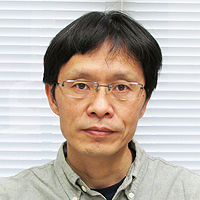Endocrine abnormalities in two siblings with Rothmund Thomson Syndrome
Published on: 11th October, 2018
OCLC Number/Unique Identifier: 7906107605
Rothmund-Thomson syndrome is a rare autosomal recessive disorder characterized by poikiloderma (skin atrophy, telangiectasia, hyper- and hypopigmentation), congenital skeletal abnormalities, short stature, premature aging, and increased risk of malignant disease. Two siblings with Rothmund-Thomson Syndrome showed the following characteristic features: severe growth failure, dystrophic nails, absent eyelashes/eyebrows, small hands, clinodactyly, microdontia and congential poikiloderma. In addition, delayed sexual development with cryptorchidism in the male and Hashimato thyroiditis in the female patient were detected. These cases are presented here because of these endocrine patterns, with the aim of drawing attention to the invisible aspects of Rothmund-Thomson syndrome.
COVID-19 associated hyperthyroidism due to destructive thyrotoxicosis in a young female patient
Published on: 27th July, 2020
OCLC Number/Unique Identifier: 8643729535
SARS-CoV2 can induce multiple immunological and endocrinological changes. We report the case of a COVID-19 associated hyperthyroidism in a young female.
Per definition the patient – because of having given birth six weeks previously - had a postpartum thyroiditis. However thus no antibodies were detected, the thyroiditis ceased without medication after the dissolving of the virus disease and the fT3/fT3-ratio proved a destructive thyreopathy as well as there was a close time link onset of the symptoms with the novel corona virus infection we argue it to be a COVID-19 induced thyrotoxicosis.
This proves the ability of SARS-CoV-2 to alter thyroid function, therefore all COVID-19 patients should be monitored regarding endocrinological changes and TSH, fT3, fT4 should be assessed.
Two Endocrine Disorders, One Postpartum Period: “The Coexistence of Thyroiditis and Hypophysitis,” A Case Report
Published on: 24th December, 2024
The postpartum period is a phase during which various endocrine disorders may arise due to changes in the immune system. Postpartum thyroiditis and postpartum hypophysitis (lymphocytic hypophysitis) are two autoimmune diseases that typically occur independently but are rarely found together in the same patient.Postpartum thyroiditis usually starts with thyrotoxicosis and progresses to hypothyroidism, while postpartum hypophysitis can lead to adrenal insufficiency and dysfunction of other pituitary hormones.This case report discusses a female patient who presented with severe headaches, fatigue, and hypotension five months after childbirth. The patient was diagnosed with both postpartum thyroiditis and postpartum hypophysitis simultaneously, and dysfunction of both the thyroid and pituitary was detected. Hormone replacement therapies were administered, and the patient’s symptoms were brought under control.This case emphasizes the importance of carefully evaluating both thyroid and pituitary function during the postpartum period. Early diagnosis and appropriate treatment are crucial for preventing potential complications and improving long-term health outcomes.
















